Entry Category: Civil War to Gilded Age
Jones, James (Lynching of)
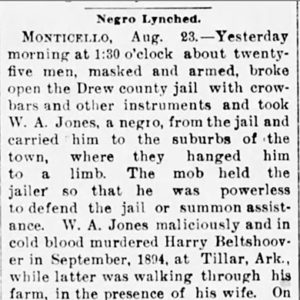 James Jones Lynching Article
James Jones Lynching Article
 James Jones Lynching Article
James Jones Lynching Article
Jonesboro Lynching of 1881
aka: Greensboro Lynching of 1881
Jordan, Bob (Lynching of)
King, Frank (Lynching of)
Kirkendall, Mose (Lynching of)
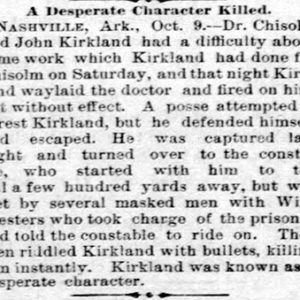 John Kirkland Lynching Story
John Kirkland Lynching Story
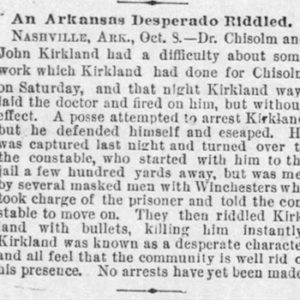 John Kirkland Lynching Story
John Kirkland Lynching Story
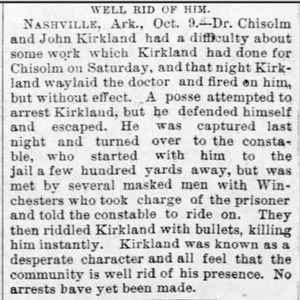 John Kirkland Lynching Story
John Kirkland Lynching Story
Larkin, Hill (Lynching of)
Lightfoot, G. P. F. (Lynching of)
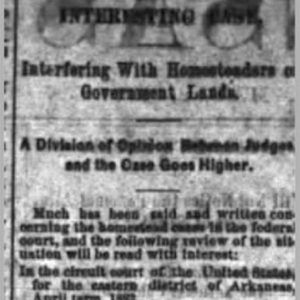 Lindsay Lawsuit Article
Lindsay Lawsuit Article
Little River County Race War of 1899
Livingston, Abe (Lynching of)
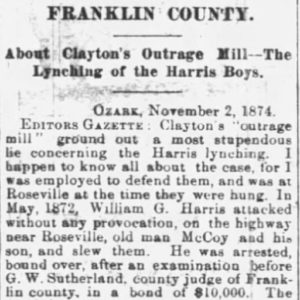 Logan County Lynching Article
Logan County Lynching Article
Lonoke County Race War of 1897–1898
Lucas, John Gray
Marked Tree Race Riot of 1894
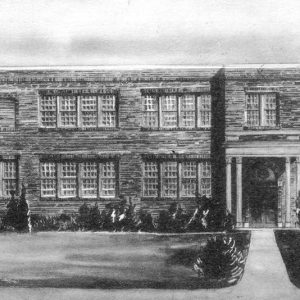 Matthews Hall
Matthews Hall
McConico, J. H.
aka: John Hamilton McConico
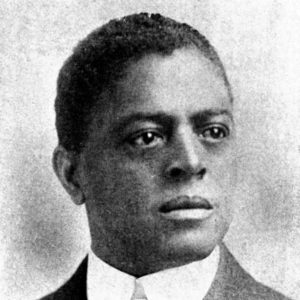 J. H. McConico
J. H. McConico
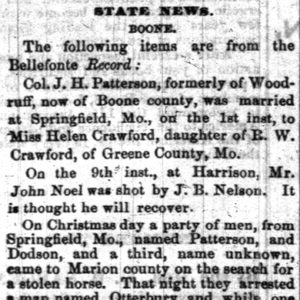 McDonald Lynching Article
McDonald Lynching Article
McGehee Lynching of 1894
McLendon, Will (Reported Lynching of)
McNeil, Sharpe (Lynching of)
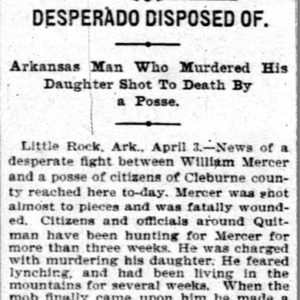 William Mercer Lynching Story
William Mercer Lynching Story
 William Mercer Lynching Story
William Mercer Lynching Story
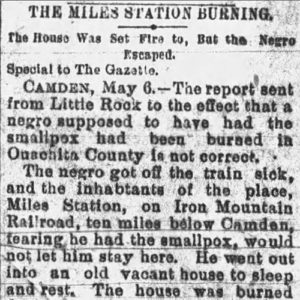 Miles Station House Fire Story
Miles Station House Fire Story
Mitchell, Charles (Lynching of)
Monroe County Lynching of 1893
Morrison, Lee (Lynching of)
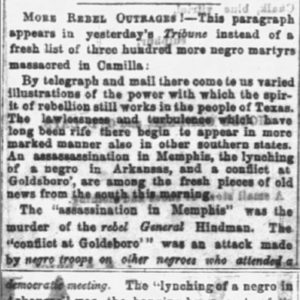 Lee Morrison Lynching Article
Lee Morrison Lynching Article
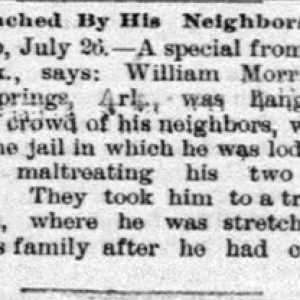 William Morrison Lynching Article
William Morrison Lynching Article
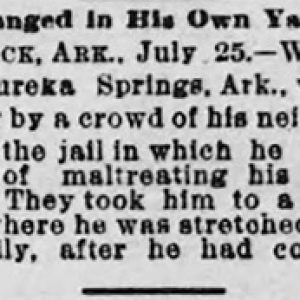 William Morrison Lynching Article
William Morrison Lynching Article
 Mosaic Templars of America Seal
Mosaic Templars of America Seal
Mosely, Julius (Lynching of)
Mullens, Nat (Lynching of)
Neal, Hemp (Lynching of)
Neely, Amos (Lynching of)
Nelson, Dan T. (Lynching of)
Nevada County Race War of 1897
Oats, Presley (Lynching of)
Oliver, Dan (Lynching of)
Paragould Race Riots
Parker, Tom (Reported Lynching of)
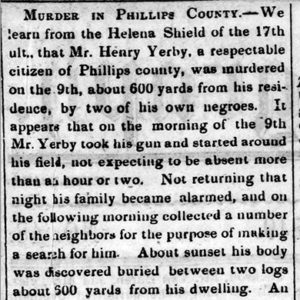 Phillips County Lynching Article
Phillips County Lynching Article




